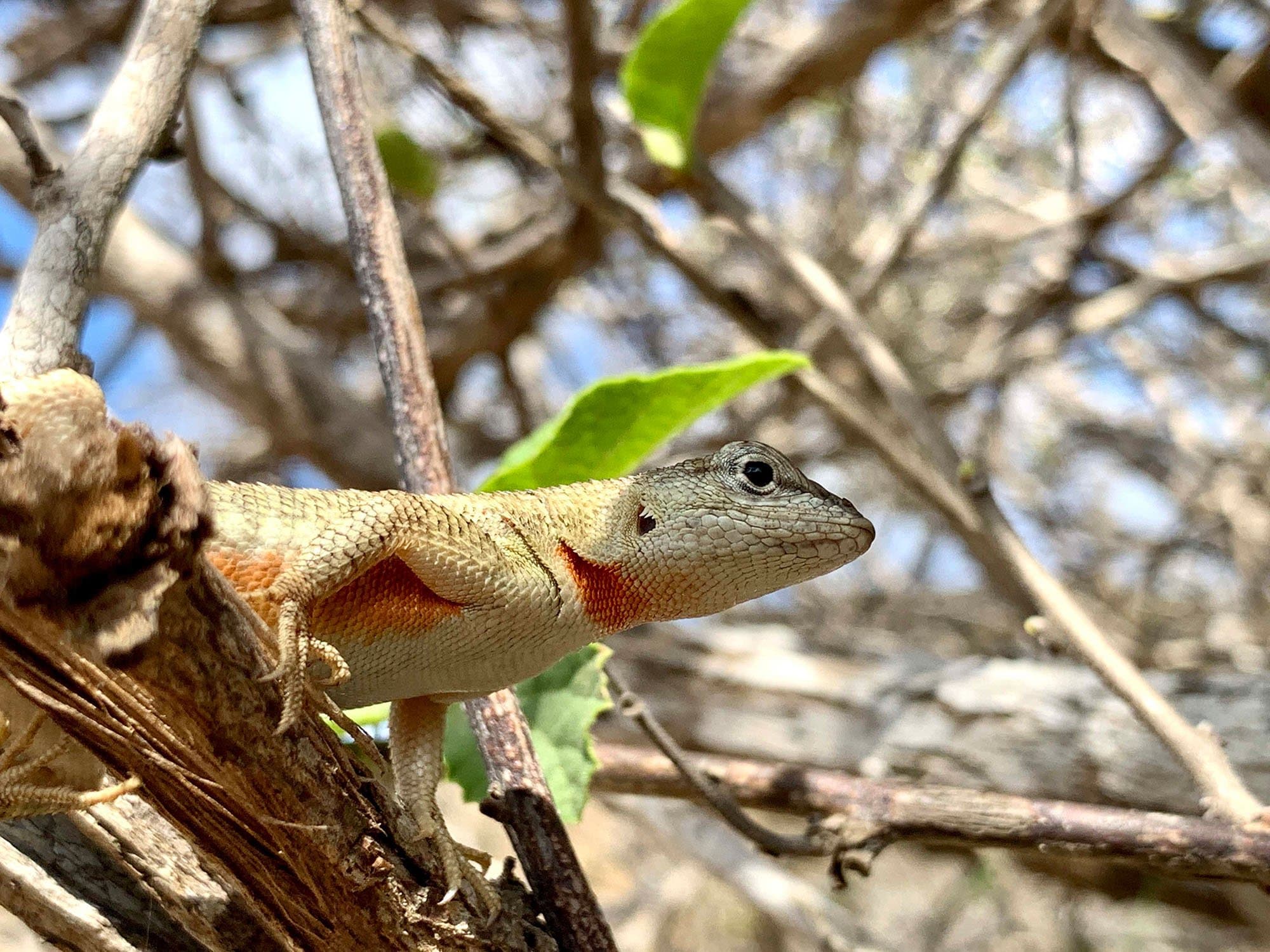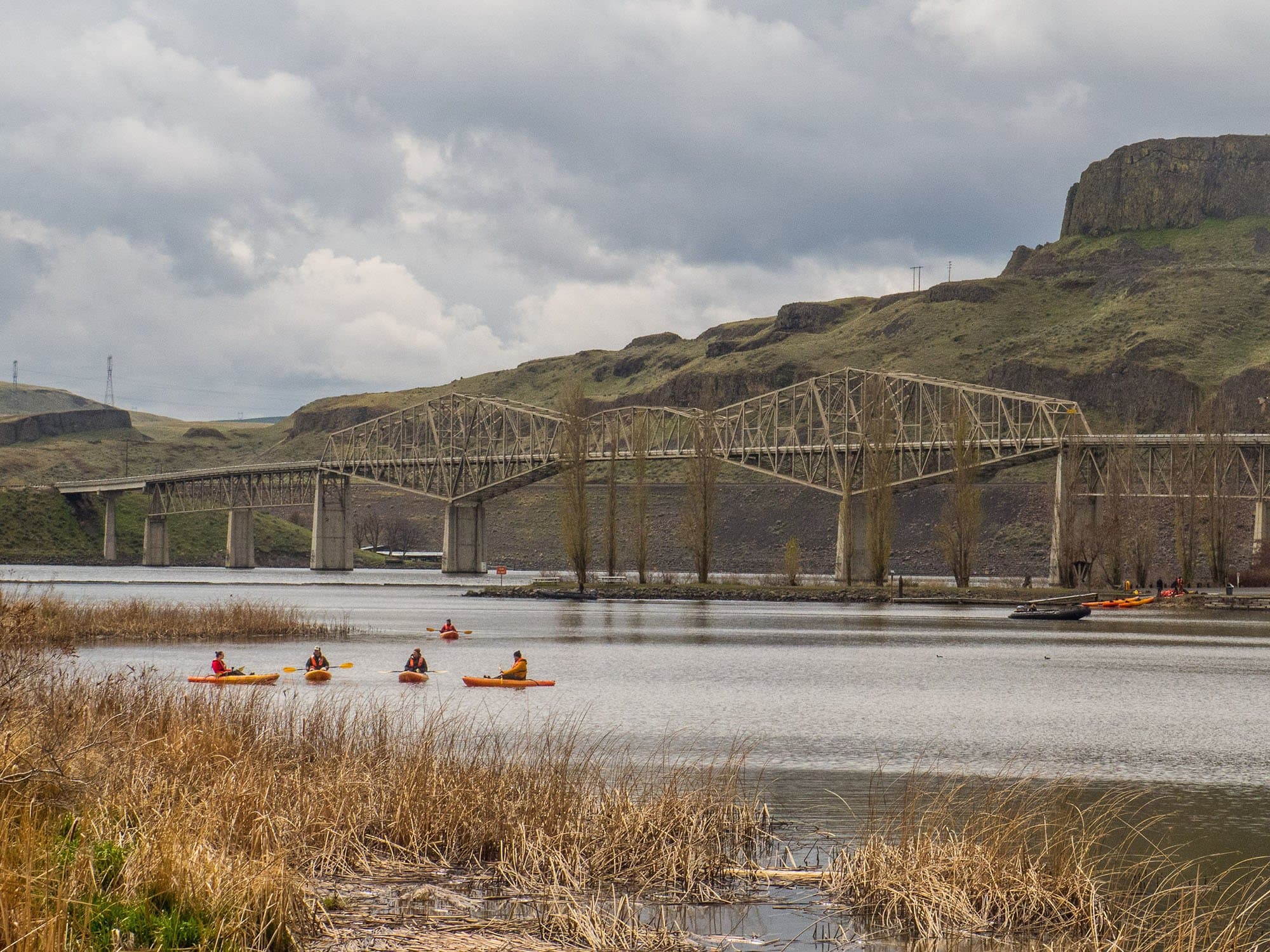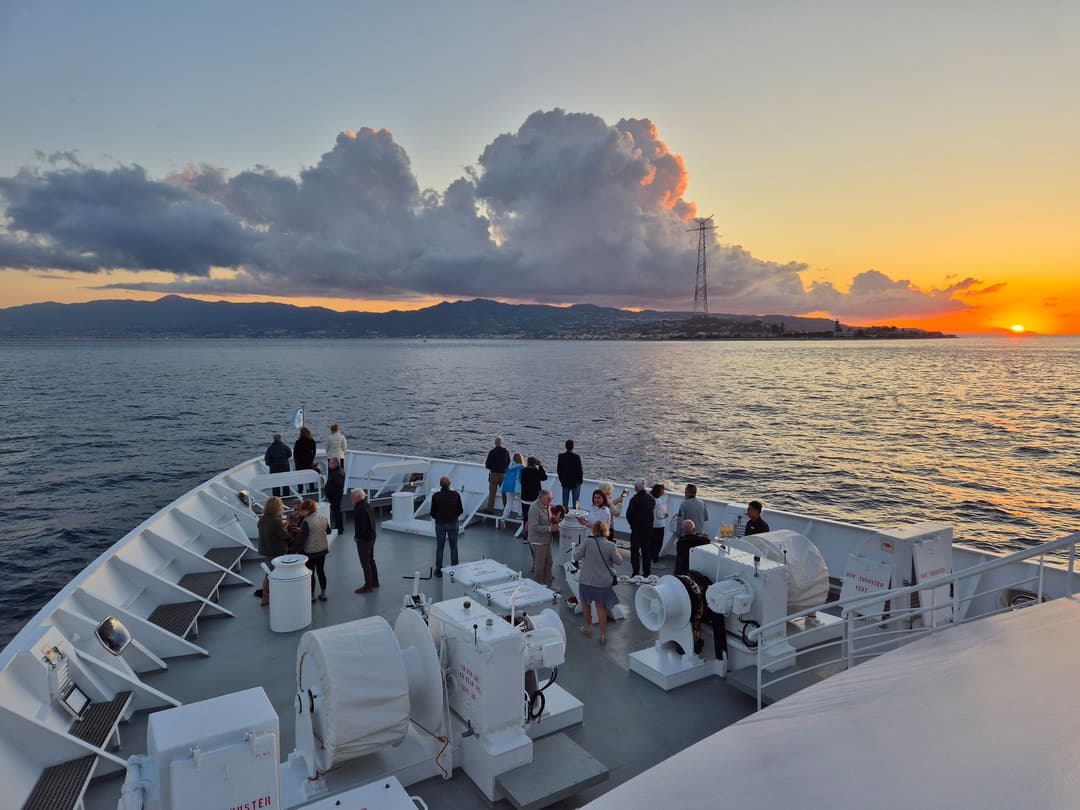
The number of times that Lindblad field staff use the word "unusual" in any given week is a little astonishing, but this week, the word got a workout that was, well, unusual itself. In the Galapagos Islands, the rainy season has provided a green backdrop that allows for striking wildlife photos. It's also created an abundance of food, which means that species like land iguanas and giant tortoises are on the move and seeking snacks. Along the Columbia River, early wildflowers are providing a pop of color in a landscape that's just beginning to turn green. And in the Peruvian Amazon, there are so many animal species that nearly every day yields an uncommon monkey or frog sighting!
For more dispatches from the field, check out our Daily Expedition Reports.
Have you recently traveled aboard one of our ships? Send us your favorite photo! We'd love to feature your favorite memory of your expedition.
Yanallpa River, Peru
Upper AmazonAboard the Delfin II, April 6, 2022

A monk saki monkey, one of the most elusive primates in the Amazon, dries its fur high up in the canopy. —Socrates Tomala, Naturalist/Certified Photo Instructor
Plaza Island, Galápagos
Wild Galápagos Escape, April 7, 2022

Baby lava lizard next to a sesuvium plant. —Ixora Berdonces, Naturalist
Genovesa Island, Galápagos
Galápagos AboardNational Geographic Endeavour II, April 8, 2022

A Galapagos short-eared owl, surrounded by green vegetation from the rainy season. —Christian Saa, Naturalist/Certified Photo Instructor
Casual Forest, Peru
Upper AmazonAboard the Delfin II, April 9, 2022

On our last day, we went to a forest to hike. The area has a system of trails that allows visitors to feel immersed in the jungle. We found many poisonous frogs and invertebrates. —Ramiro Adrian, Naturalist
Clarkston, Washington
Columbia & SnakeRivers Journey, April 11, 2022

The snow flurries this morning may have confused not only us but also the spring wildflowers. These arrowleaf balsamroot flowers perched on the hillside were none the worse for it. —Linda M. Burback, Naturalist/Certified Photo Instructor
North Seymour Island, Galápagos
Wild Galápagos Escape, April 11, 2022

We found a couple of blue-footed boobies nesting and displaying the “booby dance” on the ground. The male shows his beautiful blue feet to the female. —Paulina Saa, Naturalist
Palouse River, Washington
Columbia & SnakeRivers Journey, April 12, 2022

Kayakers paddle around the banks of Lyon’s Ferry State Park and the Palouse River. The Joso High Bridge, built in 1912, stands majestically in the background. Snake River, Washington. —Patrick MacQuarrie, Cultural Specialist (photo by Dave Katz)
Isabela Island, Galápagos
Galápagos AboardNational Geographic Endeavour II, April 12, 2022

During our morning exploration, we had a wet landing on a sandy beach to explore the inner side of the arid zone on this site. Along the way, we encountered several individuals of the Alcedo Volcano giant tortoise species. During this time of year, the rain creates a lush green environment, supplying plenty of food for these prehistoric reptiles to sustain their appetites. We counted up to 41 giant tortoises on the trail. It was quite an amazing morning, surrounded by these giants in the wilderness. —Jonathan Aguas, Naturalist/Certified Photo Instructor
Tagus Cove, Galápagos
Wild Galápagos Escape, April 13, 2022

An unexpected encounter with a penguin on the beach at Urbina Bay inspired a few guests to jump in the water. It is unexpected to find these creatures in the Galápagos. The equator crosses these islands, and penguins are supposed to prefer cold waters. However, different oceanic currents wash over the Galápagos Islands. A couple of these currents allowed penguins to arrive here, and the penguins evolved and established themselves on the islands. The Humboldt Current, in particular, is responsible for the presence of penguins here. The current comes all the way from the Antarctic, where ancestors of this penguin existed.. —Javier Carrion, Naturalist
Related Articles


